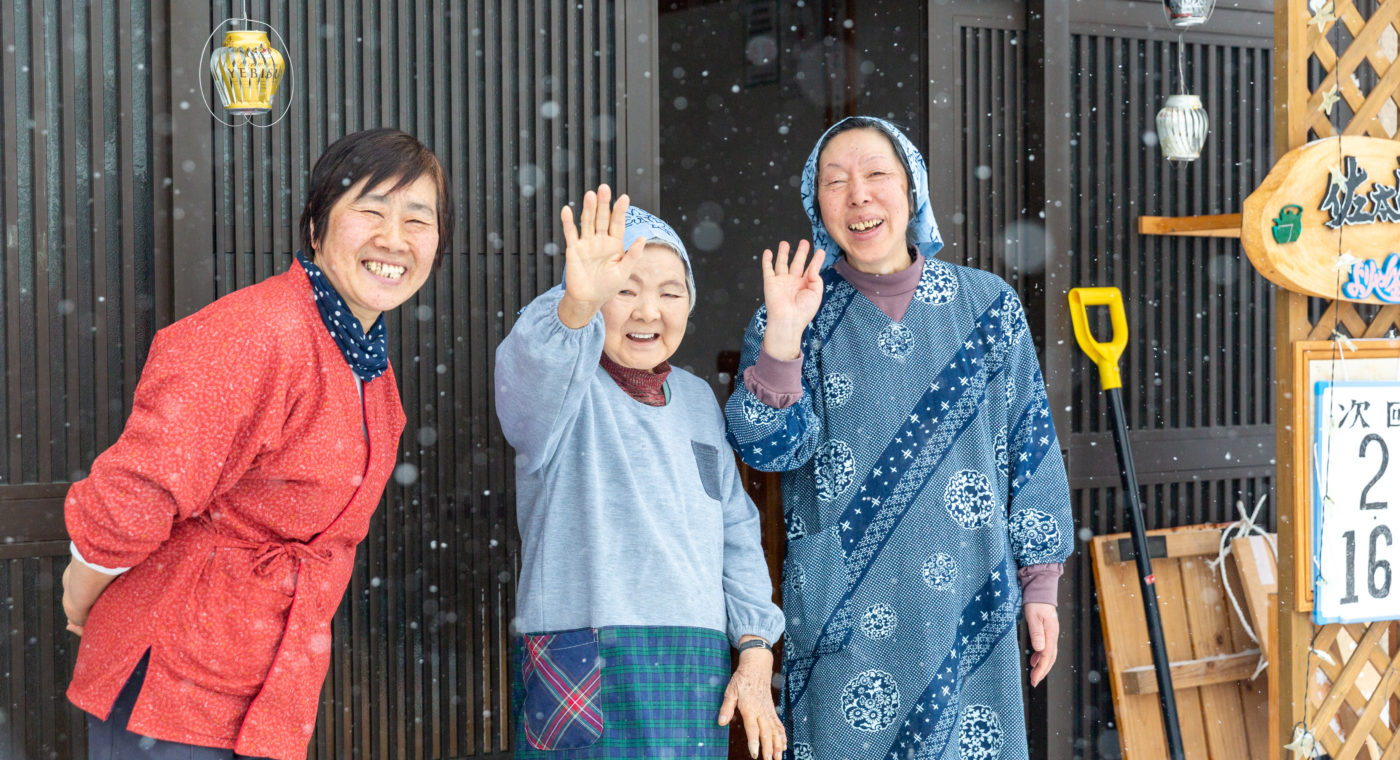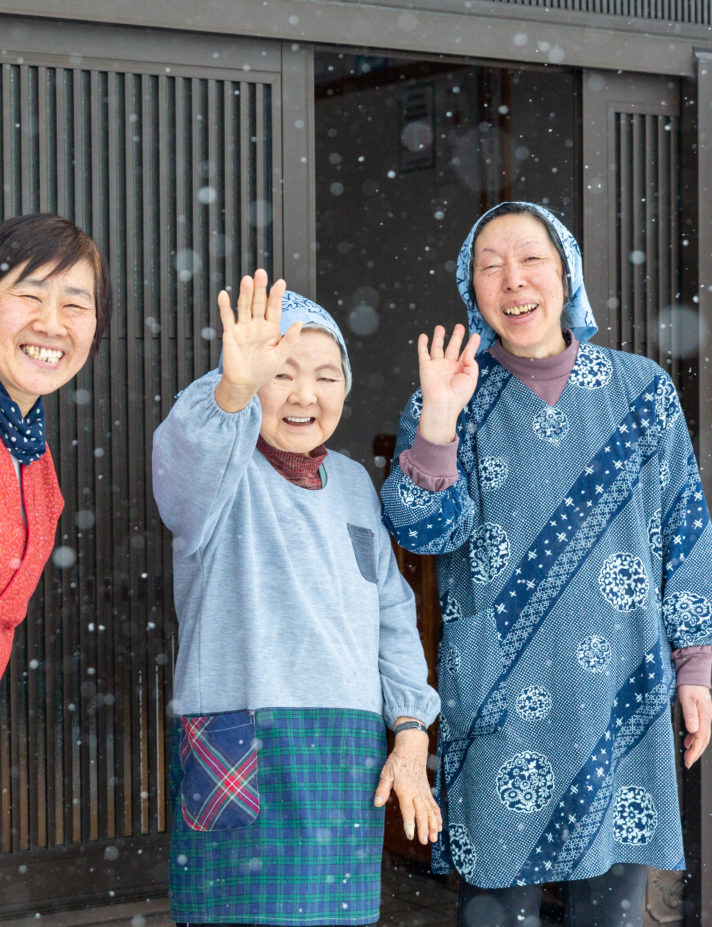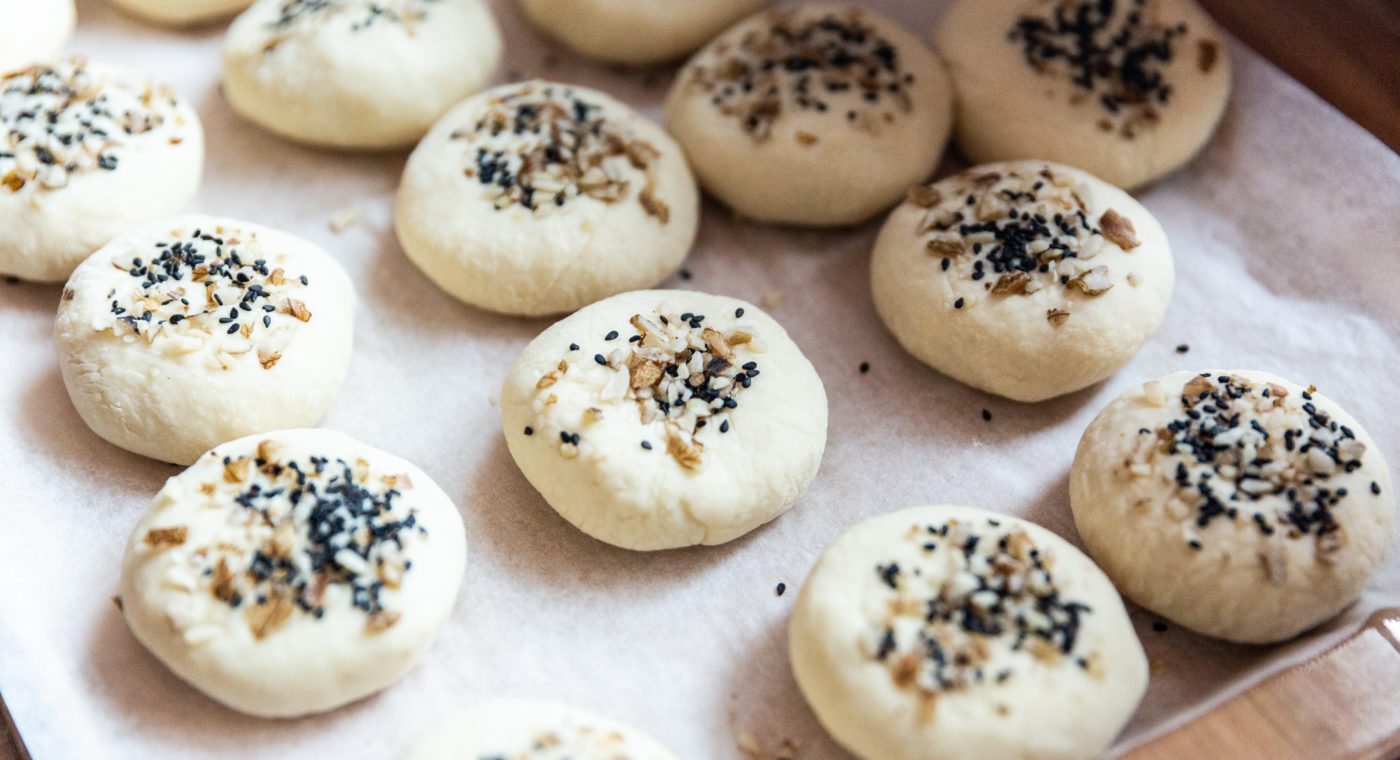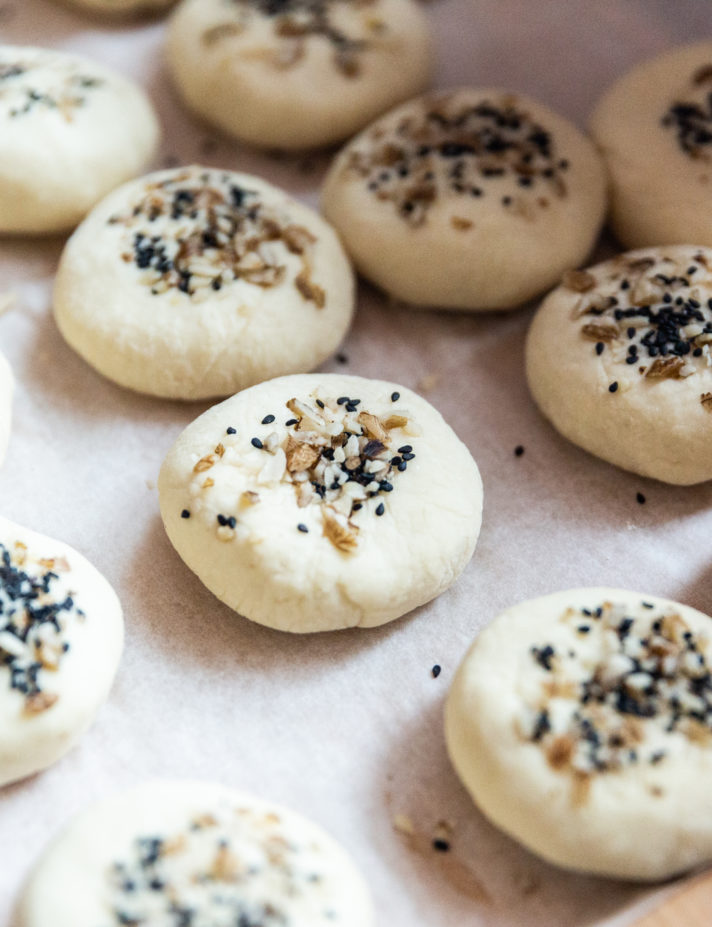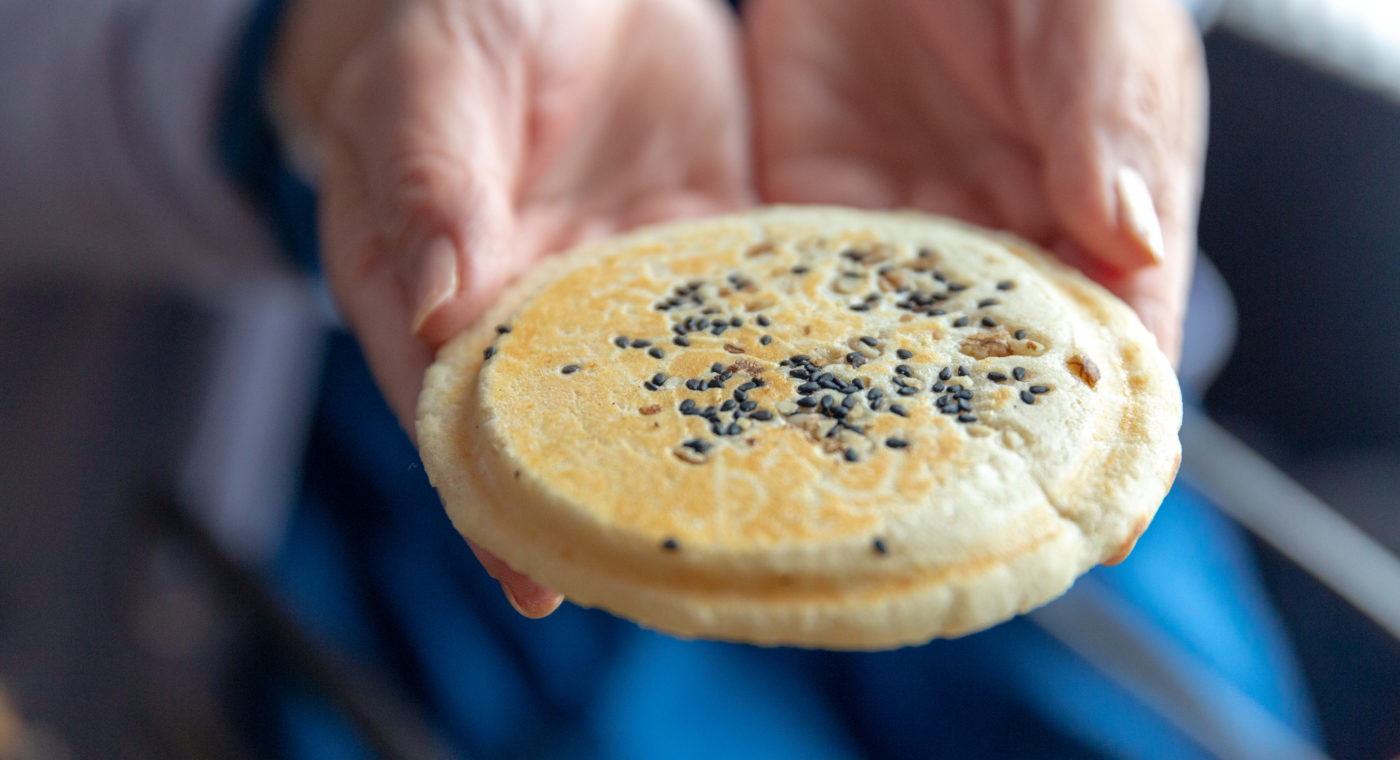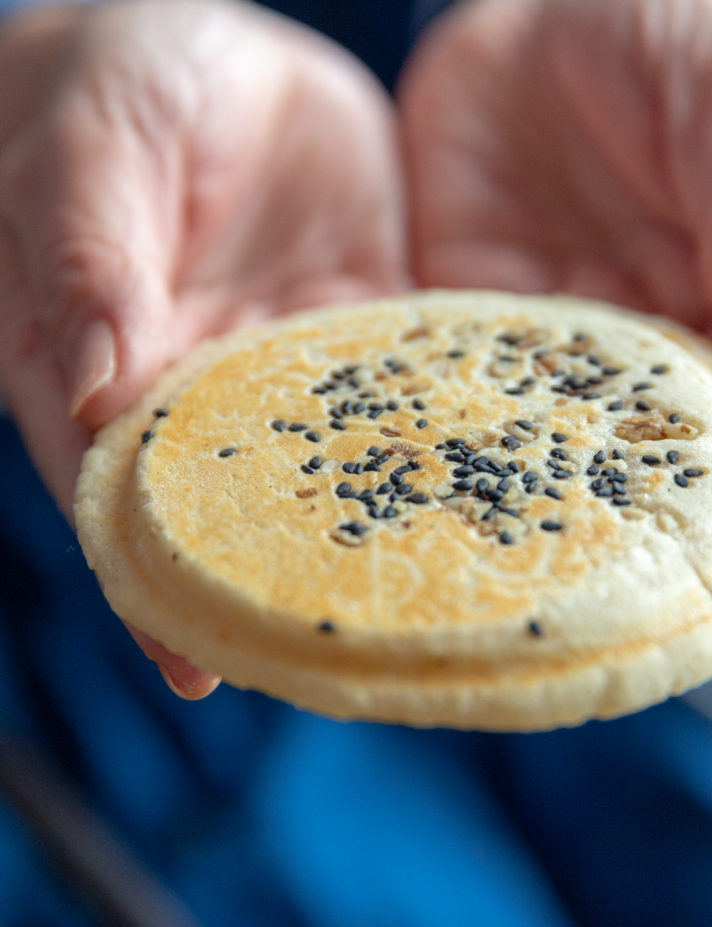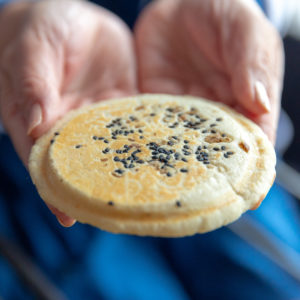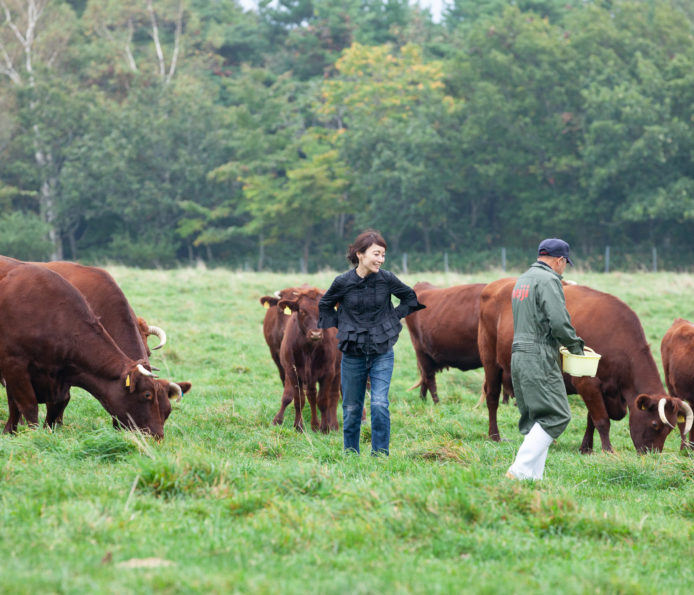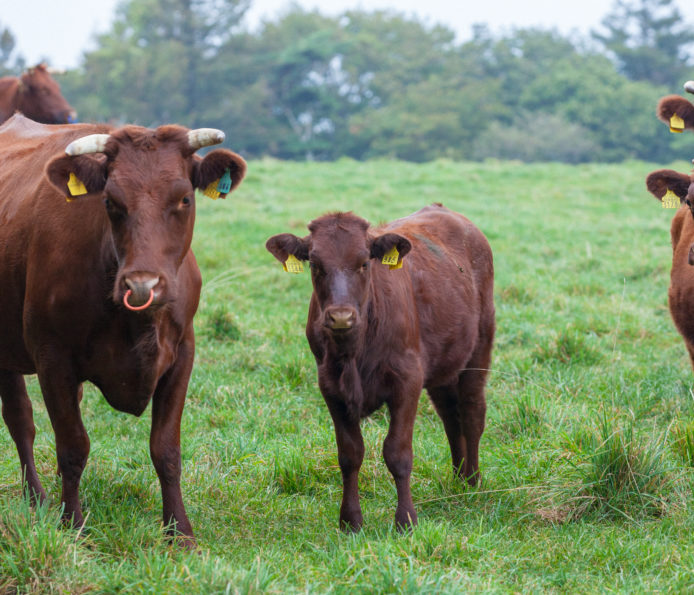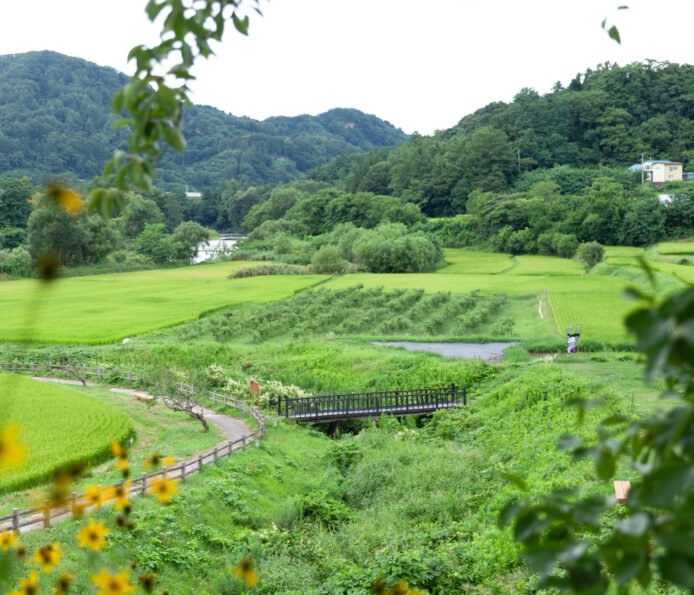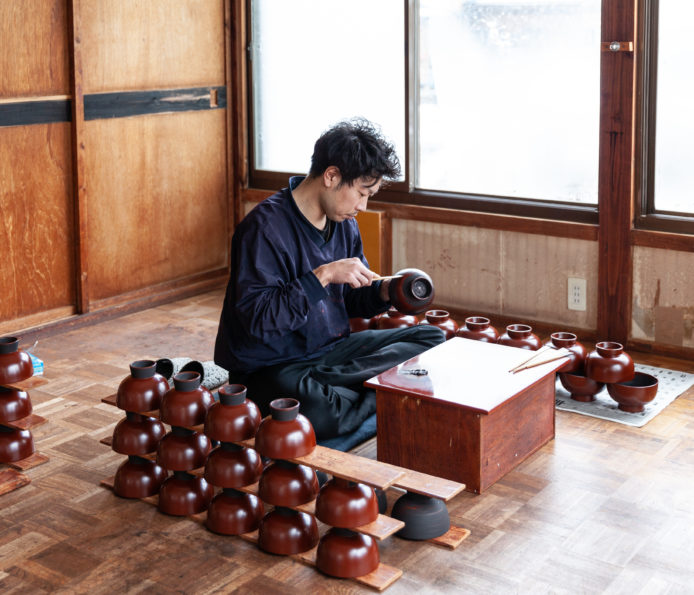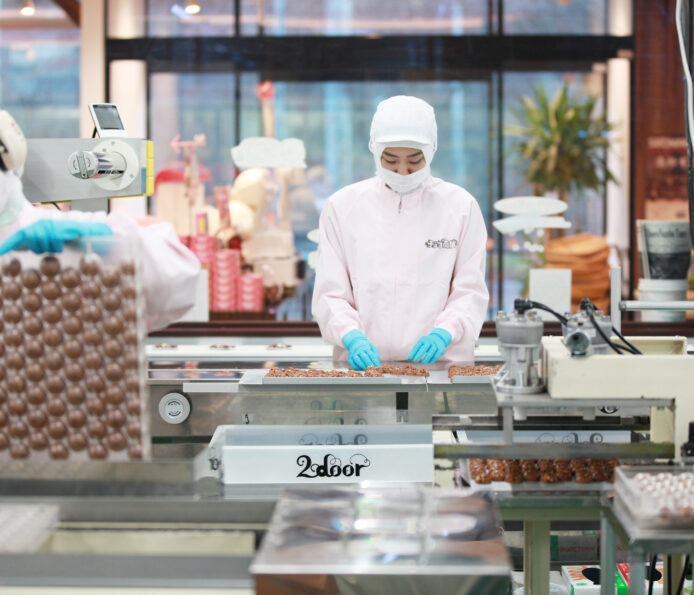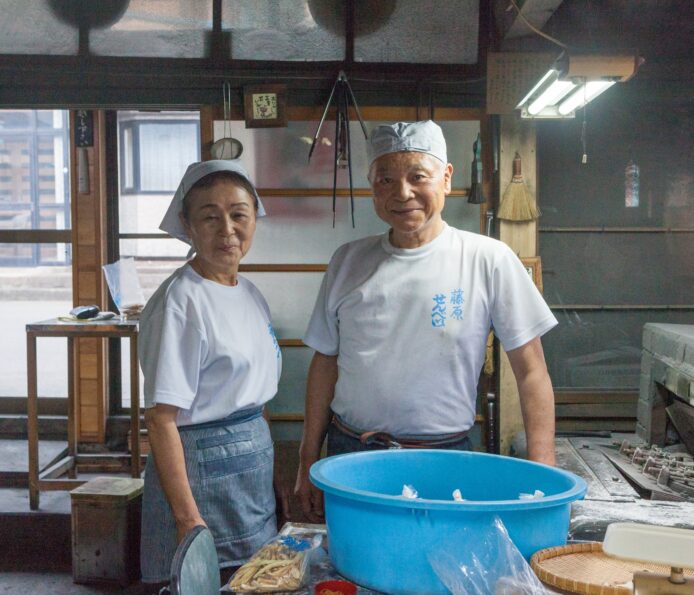Preserved food that take advantage of the severe winter climate
The severe cold winter in the Tohoku region changes Ninohe into a winter landscape.
Up a snowy mountain road is Junko Kudo’s house. Beside the main house, there’s another building equipped with a kitchen and a hearth. When we visited her there, pickles and dried daikon strips were being prepared. They are preserved foods made by utilizing the cold climate. Local fruits, such as hardy kiwi and small, red viburnum berries, are also made into liqueurs here.
Ms. Kudo explains as she peels the skin of a daikon: “These fruits are too sour to eat raw, but they make the perfect liqueur to warm up your body from the inside on a cold night.”
In Iwate Prefecture, those with exceptional culinary skills in local cuisine are certified as an Iwate Traditional Food Master. Ms. Kudo is one of them. She works to protect the local taste of Ninohe, research it, and to pass it on to the next generation.
She efficiently prepares shimi daikon. The daikon is first washed, cut into the appropriate size, peeled, and boiled before it is hung under the sun. Once the surface of the daikon pieces dry and become white, they are hung under the eaves where it is protected from the rain. After repeating the process of freezing at night and thawing during the day for 3 weeks, they are ready.
Ms. Kudo tells us the local name for shimi daikon. She says, “It’s called shimi (frozen) daikon because it’s dried through the process of freezing and thawing.”
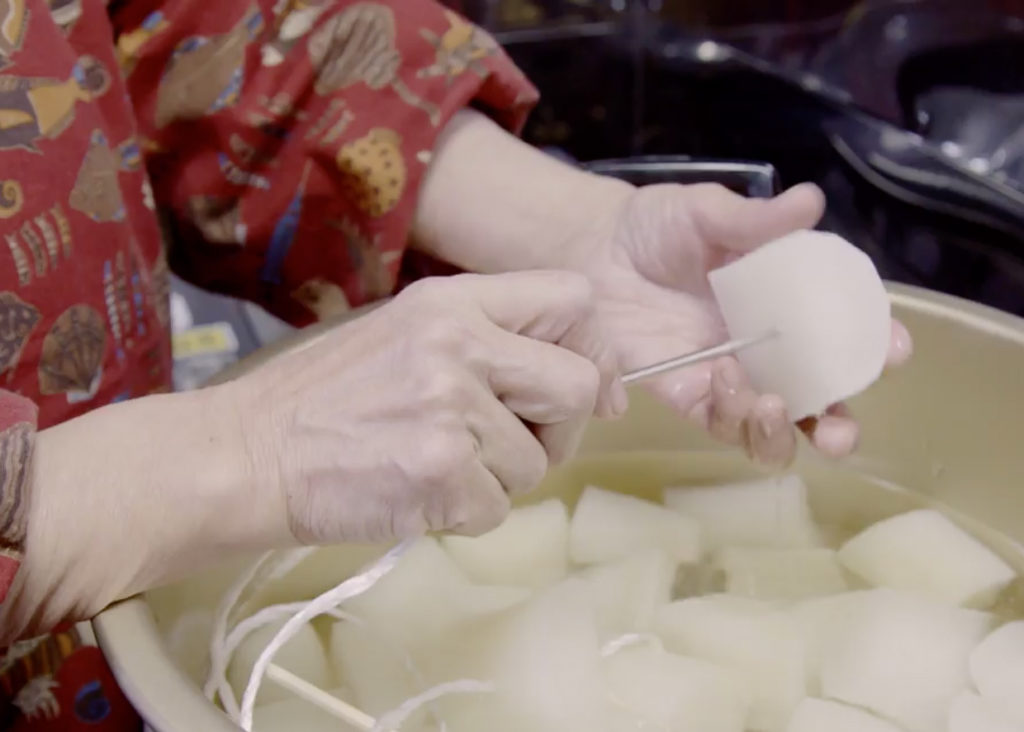
It’s like a natural method of freeze drying. The dried daikon is used all year round as ingredients in nishime stewed vegetables and miso soup. There are many other unique dishes made using the local wisdom taking advantage of the severe winter climate. Daikon chopped with a Japanese hatchet is made into a pickled dish called gakkura-zuke. Gakkura is the local expression for the sound of daikon being chopped. By using a thick, heavy hatchet instead of a knife, the surface of the daikon is more rugged and suitable for pickling. It’s then placed into a pickling jar with dark soy sauce and chopped red chili peppers where it will sit for 3 days before it’s ready. The pickles taste all the better and last longer if they are slowly fermented over a longer period of time in the cold climate.
“It’s just so fun to make. I always end up making too much,” says Ms. Kudo happily. She often shares the pickles with her son’s family and her friends.
Learning about the culture of various cereals through tenpo-yaki
A group of local women gather at Sataro Chaya, a tea house in the Kindaichi area, and explain how a popular snack in the local region called tenpo-yaki is made. They are a part of Yoryanse Kindaichi, a community group. They preserve and research local folktales, seasonal events, and customs so that people today can understand and inherit these forms of culture.
Tenpo means “lacking” or “not enough.” The name of tenpo-yaki was derived from the national copper currency that was used during the Tenpo era. While a single coin had a face value of 100 mon, it became known as a “lacking currency” since its actual market value was only worth 80 mon. This is how people began to describe things that are slightly lacking as tenpo. Tenpo-yaki isn’t cooked as hard as a Nanbu senbei cracker which is a type of local snack made with similar ingredients. That’s why it’s called tenpo-yaki.
Teru Saito began making the batter by mixing flour and boiling water. The batter hardens as it cools, so she uses all of her strength to knead it while it’s still hot, and as a result, her hands become red. The batter is rounded and topped with sesame seeds, walnuts, or various cereals such as millet before it’s baked in a cast-iron mould.
Ms. Saito says, “In the old days, everyone had a cast-iron mould at home, so mothers and grandmothers would often make tenpo-yaki.”

If you get a chance to eat a hot tenpo-yaki that’s fresh out of the cast-iron mould, you can enjoy its soft, chewy texture. You’ll be reaching for another one before you know it.
In Ninohe, there are still many kinds of meals and snacks made with flour. In a place like Ninohe, where rice crops tended to get damaged from the cold weather even during summer, wheat was the perfect crop to cultivate as it is much more resilient to the cold. Wheat cultivation and a wheat-centered diet took root as a distinctive culture of Ninohe.
The residents of Ninohe have made the best of other locally harvested ingredients to create various original dishes to embellish their dining tables. Flour can be kneaded, baked, or steamed, and with a creative mind, it can be made into anything. Sticky flour cakes are also enjoyed in many ways here. They can be made into savory miso-flavored skewers, or be wrapped in kashiwa oak leaves which add a pleasant aroma. Of course, they can also be simply baked in a traditional hearth. Each of these unique dishes has its own name and distinct taste. Comparing the different flavors of snacks and preserved food made by the locals is one way to enjoy traveling in Ninohe.



